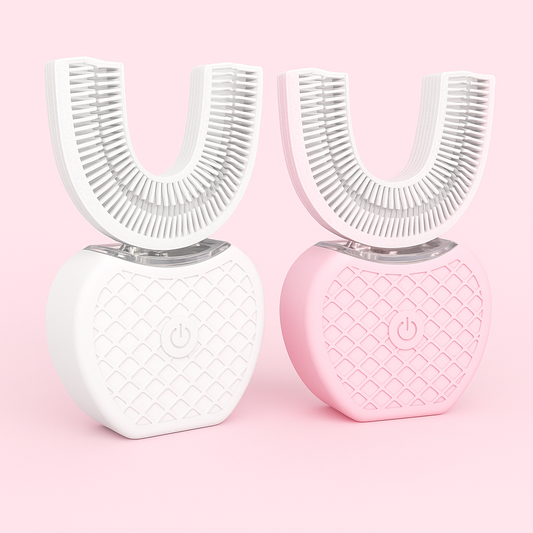Introduction
As devoted pet owners, we cherish every moment spent with our dogs—from energetic play sessions to quiet cuddle times. However, one common issue that can affect these moments is unpleasant dog breath. Bad breath, medically known as halitosis, is not just a nuisance; it can be a warning sign of underlying health problems. In 2025, with the advancement in veterinary care and pet products, maintaining fresh breath for your dog has become more accessible and effective than ever before.
This detailed guide provides expert tips, backed by the latest research and veterinary recommendations, to help you keep your dog’s breath fresh and their oral health robust throughout the year. Whether you’re a first-time dog owner or a seasoned guardian, incorporating these strategies will enhance your dog’s quality of life and deepen your bond.
Understanding the Causes of Bad Breath in Dogs
Before diving into prevention and treatment, it’s essential to understand why dogs develop bad breath. Common causes include:
- Poor Oral Hygiene: Just like humans, dogs accumulate plaque and tartar on their teeth, which harbor bacteria producing foul odors.
- Dental Disease: Gum disease, tooth decay, and infections can cause persistent bad breath and pain.
- Diet and Eating Habits: Certain foods or eating habits, such as scavenging or eating garbage, can contribute to odor.
- Gastrointestinal Issues: Problems like acid reflux, intestinal disorders, or infections may cause bad breath.
- Systemic Health Conditions: Diseases such as diabetes, kidney disease, or liver problems may manifest as halitosis.
Recognizing these causes helps in targeting the right preventive and corrective measures.
1. Schedule Regular Veterinary Dental Check-Ups
Veterinary dental care is foundational in preventing and treating bad breath. Professional cleanings remove tartar and plaque that accumulate under the gum line, which cannot be effectively addressed by home care alone.
- How Often? Most vets recommend annual dental check-ups, but dogs prone to dental issues might require more frequent visits.
- What to Expect: During the visit, your vet will examine your dog’s teeth and gums, possibly perform dental X-rays, and clean the teeth under anesthesia to ensure thoroughness and safety.
- Benefits: Early detection of dental disease prevents pain, tooth loss, and systemic infections. It also significantly reduces bad breath caused by oral bacteria.
Remember, never ignore persistent bad breath as it may be a symptom of a serious health issue requiring immediate veterinary attention.
2. Establish a Consistent and Effective Brushing Routine
Daily brushing is the most effective way to reduce plaque buildup and maintain fresh breath. While it may seem challenging at first, patience and consistency make it achievable.
- Choosing the Right Tools: Use a toothbrush designed for dogs or a finger brush for better control. Pick enzymatic toothpaste formulated specifically for dogs, which helps break down plaque and is safe if swallowed.
- Introducing Brushing: Start slowly by letting your dog taste the toothpaste and gradually introducing brushing motions on their teeth and gums.
- Brushing Technique: Focus on the gum line where plaque accumulates, brushing gently in circular motions. Aim to brush at least 2-3 times a week, with daily brushing being ideal.
- Positive Reinforcement: Reward your dog with praise or treats post-brushing to create a positive association.
3. Incorporate Dental Chews and Treats into Your Dog’s Routine
Dental chews serve as a convenient supplement to brushing by mechanically scraping plaque from teeth and stimulating saliva production, which naturally cleans the mouth.
- Selection Criteria: Opt for dental chews approved by veterinary dental associations to ensure safety and efficacy.
- Popular Options: Rawhide alternatives, specially formulated dental sticks, and bones designed to reduce tartar and freshen breath.
- Supervision and Moderation: Always supervise your dog while chewing and provide appropriate sizes to avoid choking or digestive blockages.
In 2025, many chews are enhanced with natural breath-freshening ingredients such as parsley, mint, or chlorophyll for added benefits.
4. Utilize Water Additives for Convenient Oral Care
Water additives have gained popularity as a stress-free way to improve oral hygiene, especially for dogs resistant to brushing.
- How They Work: These additives reduce bacteria and plaque formation in the mouth by altering the oral environment.
- Choosing the Right Product: Select vet-approved, alcohol-free additives that are safe and palatable for your dog.
- Usage Tips: Follow dosing instructions carefully and ensure your dog drinks enough water daily to maximize effectiveness.
Water additives serve as an excellent supplementary measure but should not replace brushing or professional cleanings.
5. Enhance Your Dog’s Diet with Crunchy Fruits and Vegetables
Incorporating crunchy fruits and vegetables into your dog's diet provides a natural way to clean teeth and freshen breath while delivering essential nutrients.
- Safe Choices: Carrots, apples (without seeds), celery, cucumber slices, and green beans are excellent options.
- Preparation: Cut the produce into bite-sized pieces appropriate for your dog's size to prevent choking.
- Health Benefits: These foods help scrub away plaque, promote chewing, and provide vitamins and fiber.
- Precautions: Avoid toxic foods such as grapes, raisins, onions, garlic, and avocado.
6. Support Digestive Health with Probiotics
Bad breath can sometimes originate from the digestive system. Probiotics help balance gut flora, improving digestion and reducing odor-causing compounds.
- Selecting Probiotics: Choose formulations designed specifically for dogs, containing strains like Lactobacillus and Bifidobacterium.
- Consult Your Veterinarian: Before introducing probiotics, discuss with your vet to ensure suitability and correct dosage.
- Long-Term Use: Consistent administration over weeks is usually needed to see benefits.
7. Create Safe Homemade Dental Care Solutions
For those who prefer natural remedies, homemade dental care solutions can be an effective adjunct to commercial products.
- Baking Soda Rinse: A mild solution of baking soda and water can be used as a gentle rinse to neutralize odors.
- Coconut Oil: Brushing your dog’s teeth with coconut oil can reduce bacteria and freshen breath due to its antimicrobial properties.
- Herbal Remedies: Adding small amounts of parsley or peppermint powder to your dog’s food may help reduce bad breath.
- Safety First: Always verify the safety of ingredients and avoid anything toxic to dogs.
Additional Tips for Year-Round Fresh Breath
- Hydration: Ensure your dog has access to clean water at all times to promote saliva production and wash away food particles.
- Chew Toys: Provide durable chew toys that encourage chewing, assisting in plaque removal.
- Monitor Behavior: Watch for signs of dental pain such as difficulty eating, drooling, or pawing at the mouth.
- Avoid Table Scraps: Some human foods can exacerbate bad breath and cause digestive issues.
- Maintain Overall Health: Regular exercise, a balanced diet, and timely medical check-ups contribute to your dog's general wellbeing, including oral health.
When to Consult Your Veterinarian Immediately
While mild bad breath can be managed at home, certain conditions require prompt veterinary attention:
- Sudden onset of foul breath accompanied by drooling or mouth pain.
- Visible swelling, bleeding gums, or loose teeth.
- Bad breath with systemic symptoms such as lethargy, vomiting, or loss of appetite.
- Any signs of oral tumors or growths.
Early intervention improves outcomes and prevents complications.
Conclusion
Fresh, healthy breath is a vital component of your dog’s overall health and a key factor in the quality of your shared moments. In 2025, combining regular professional dental care, a consistent at-home oral hygiene routine, smart dietary choices, and modern pet care products will ensure your dog’s breath remains fresh throughout the year.
Implementing these expert tips not only improves breath but also helps prevent dental diseases and promotes systemic health, ultimately enhancing your dog’s happiness and longevity. Prioritize your dog’s oral hygiene today to enjoy many joyful years filled with fresh kisses and loving companionship.


